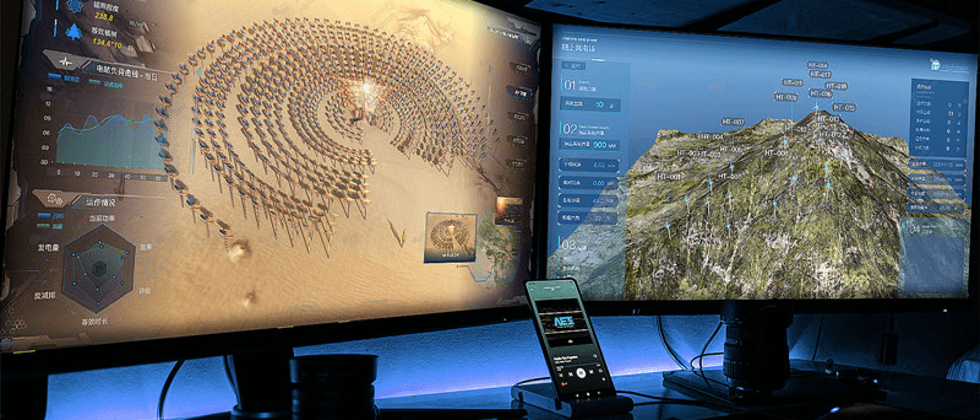foreword
The current global greenhouse gas concentration has increased by 1.2°C compared with the 19th century, and the CO2 concentration has risen by 47% in the past 170 years, which has caused various hazards such as sea level rise, crop yield reduction, and respiratory disease aggravation. In the past ten years, China's carbon dioxide emissions have always ranked first in the world. In 2020, China emitted nearly 9.9 billion tons of carbon dioxide, accounting for 30.66% of global emissions. By 2030, China's total carbon emissions are expected to further rise to 10.4-11 billion tons. between the peak levels.
In this context, the goal of "carbon neutrality", which represents sustainable development, is proposed, that is, the pursuit of net zero emissions and the decoupling of economic growth and resource consumption. All countries in the world are vigorously developing clean energy to replace traditional energy, among which the representative technologies are wind power and photovoltaics.
In the context of dual carbon, the core link of carbon reduction is the power generation end. Following the principles of the information Internet, a new type of power system with new energy as the main body is established, and efforts are also made to digitally and intelligently transform the "stock".
On the energy demand side, innovate and promote energy-saving and emission-reduction technologies, and technology companies use their digital technologies to help build "carbon neutral" platforms and green transformation of traditional companies. On the energy supply side, we should also rely on new energy power generation technology, hydrogen energy technology and energy storage technology to realize the replacement of fossil energy.
With the increase in the newly installed capacity of photovoltaic and wind energy, it is expected that it will exceed 70% in 2050, and the energy structure will usher in a major change. Renewable energy-based power generation (mainly wind and solar photovoltaics) will increase sevenfold between 2020 and 2060, when it will account for about 80% of total power generation.
According to the "Green Technology Promotion Catalogue (2020)" and related plans, wind energy and solar power generation technologies are the development priorities of "zero carbon" technologies. Among the new energy power generation technologies, wind power and photovoltaic technologies are the focus of China's energy consumption transformation.
The eastern coastal area is the center of China's power load, while the western inland provinces have the most abundant energy resources such as wind energy and solar energy. There is an obvious mismatch between the distribution of power resources and energy demand in China. In this regard, UHV transmission and distributed power generation have become two major directions to solve the mismatch between energy supply and demand: on the one hand, while vigorously developing the clean energy base in the west, promote the construction of UHV transmission lines and optimize the allocation of energy resources; on the other hand, adjust measures according to local conditions To develop distributed energy in the eastern and central regions, and to promote rooftop photovoltaic systems and decentralized wind power systems.
As an inexhaustible green and clean energy, solar energy has been widely scientifically researched. According to different semiconductor materials, solar cells can be divided into first-generation crystalline silicon solar cells, second-generation thin-film solar cells, and third-generation new solar cells. In the context of carbon neutrality, the application of solar energy has gradually deepened, and the development of new photovoltaic technologies has accelerated iteratively.
With the continuous in-depth development of the photovoltaic industry, various industries have also taken advantage of the advantages of photovoltaics to carry out applications, such as photovoltaic agriculture, photovoltaic fishery, photovoltaic water pumps, photovoltaic parks, photovoltaic charging piles, photovoltaic smart street lights and so on. The visualization of Tupu software enables the intelligent operation and maintenance of the industry, intelligent management, digital monitoring, and green development.
The application of technologies such as blockchain, artificial intelligence, big data and the Internet of Things provides a new technical path for building energy conservation and emission reduction. New technologies such as IoT smart sensors are used to intelligently balance and control various energy flows, so as to achieve the cyclical utilization of energy and achieve refined management of energy consumption. The "Energy as a Service" distributed campus smart energy management solution can meet the needs of integrated operation and maintenance and diversified services.
"Zero-carbon" technology is the key technology to realize the transformation of energy supply structure, which includes both zero-carbon power technology and zero-carbon non-electric energy technology. On the one hand, starting from zero-carbon power technology-new energy power generation technology, it will realize a large proportion of fossil energy replacement and "carbon reduction" from the source; secondly, through zero-carbon non-electric energy technology and energy storage technology, new energy power will be improved. The utilization rate is applied throughout the power generation side, the transmission side and the user side. Finally, innovate and gradually apply CCUS technology to assist high-emitting sectors to effectively reduce carbon emissions.
For more industry application examples, please refer to the case link on the official website of Tupu Software: https://www.hightopo.com/demos/index.html





**粗体** _斜体_ [链接](http://example.com) `代码` - 列表 > 引用。你还可以使用@来通知其他用户。